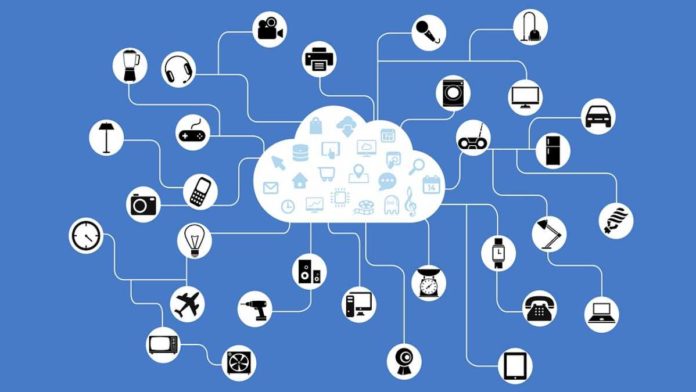The Internet of Things (IoT) technology is emerging as one of the futuristic innovations. A reality that seemed like a dream when the concept was first introduced in 1999 by British technologist Kevin Ashton.
Today, IoT has grown into a billion-dollar industry, with the latest market analysis by Statista showing a valuation of 388 billion U.S dollars back in 2019. Projections show that the consumer IoT market could surpass $500 billion by 2030.
So, what’s the big deal about IoT? This technology features among the latest concepts of the 21st century.
The goal of IoT technologies is to enable communication between smart devices. As the world adopts the digital era, it has become evident that interactions will no longer be limited to humans – IoT is set to drive the next frontier of communication.
This technology proposes a significant value proposition in connecting smart devices through the internet, a narrative that is fast gaining popularity.
According to Statista forecasts, the installed base of active IoT connected devices will likely hit 30 billion units by 2025. Notably, IoT is being adopted across many industries, including healthcare, logistics and agriculture.
However, the main driver has been the concept of smart homes and cities – a world where home appliances can communicate with each other and automate processes from this communication loop.
IoT in Modern-Day Industries
In the era of technology, everyone is out for the best ways to automate systems and improve efficiency.
Luckily, innovations within the Internet of Things niche are proving to be significant drivers towards automation and integration. IoT sensors can transmit data across connected devices, enabling most traditional industries to improve their existing ecosystems.
One industry that is already reaping the fruits of IoT in healthcare; there are several IoT integrations within the healthcare industry, most of which are focused on improving data transmission.
With IoT, the healthcare industry can keep track of patient’s data and other vital records. For instance, Current Health, which focuses on remote patient monitoring, uses IoT sensors to transmit patient data via cellular networks.
Other than healthcare, IoT is being used actively to improve cloud controlled networks. Stakeholders in this industry, including Cisco Meraki, are now integrating IoT sensors to track devices outside its premises.
Companies in the retail sector can even track the condition of perishable goods by embedding smart sensors that transmit data records such as temperature.
As for smart homes, most devices today have IoT sensors which means that they can communicate.
Amazon, for example, leverages the Alexa voice technology to enable IoT connections across multiple home appliances, including smart refrigerators, smart bulbs, smart switches and thermostats.
The Challenge in Existing IoT Solutions
Despite the success achieved thus far, IoT as a technology faces many shortcomings in its current state. For starters, IoT networks are exposed to security threats that could leak private data.
Even worse, hackers can quickly gain control of IoT connected networks, ultimately compromising the data transmission channels.
There is also a gap between today’s operational technologies and IoT, making it challenging to align them. In most setups, companies have chosen to run both as separate departments hence a big challenge to realize the full potential of IoT.
Lastly, the maintenance of IoT devices is pretty costly, given that these networks rely on thousands of devices and sensors to maintain a steady communication flow. In addition, most of the existing IoT infrastructure is run from central repositories, a big challenge for scaling.
Can peer-to-peer Networks Scale the Use of IoT?
By now, you may have come across blockchain or cryptocurrencies; the former is the supporting technology of the latter.
Blockchain technology is based on peer-to-peer infrastructure; ideally, these networks enable participants to interact directly instead of relying on third parties.
The concept can be seen in action in Bitcoin’s ecosystem, where users send coins directly from one wallet to another. The underlying peer-to-peer architecture supports these direct transactions.
How can IoT benefit from this type of network? Peer-to-peer networks introduce the aspect of decentralization, enabling anyone to be part of the network. Similarly, IoT networks can integrate with peer-to-peer innovations to increase participation, not to mention that p2p ecosystems are more scalable and secure.
While not many IoT projects have integrated blockchain, some pioneers like Nodle are already setting the pace.
This IoT focused innovation seeks to increase the number of connected devices by leveraging blockchain and cryptocurrencies. Nodle uses open protocols, including Bluetooth Low Energy (BLE), to enable users to connect their smartphone devices with IoT networks.
The value proposition of Nodle revolves around network contributors and consumers (Firms that use IoT sensors to transmit data). Network contributors can be anyone with a smartphone device, while consumers include IoT service providers like Cisco Meraki.
Nodle network contributors are rewarded with network incentives, giving them an opportunity to earn Nodle Cash. On this front, the project has partnered with prominent firms including ESTV, a global leader in sports streaming. This partnership allows ESTV users to run Nodle nodes while streaming hence creating an avenue to generate passive income.
Essentially, combining IoT with blockchain offers more room to scale the number of connected devices. Furthermore, blockchain ecosystems provide more network security as they are not controlled from a single point.
Wrap Up
As we have seen, IoT will play a significant role in the connectivity of devices within the next decade. Going by the trends, it is likely that more industries will integrate IoT sensors for device communication. However, companies can only adopt IoT networks on a large scale if the current shortcomings are solved.
Thanks to p2p networks, we are now seeing the possibility of scaling IoT networks globally. Should more IoT projects pivot towards blockchain, there will be minimal need to improve the existing IoT infrastructure. Instead, IoT innovators can leverage the nascent blockchain ecosystem to improve scalability and security.
